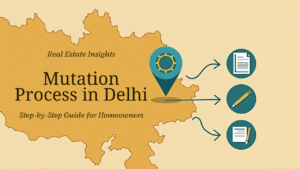If you’re looking to buy a home, getting a mortgage preapproval in Canada is the crucial first step. It shows what you can afford and locks in a rate—helping you shop with confidence. This guide makes the bank mortgage process easy to understand. Written in clear, friendly language, it outlines the steps, real examples, lender options, and key tips to help you move forward.
What Is Mortgage Pre-approval in Canada?
A mortgage preapproval is when a lender—or a broker working with multiple lenders—reviews your financial information and gives you an estimated loan amount and interest rate. It usually comes with a rate hold for 60 to 150 days, letting you secure a rate even if market rates rise during your home search.
Why Get Pre-approved?
- Know your budget: You won’t waste time looking at homes outside your price range.
- Gain seller confidence: A preapproval letter signals you’re serious and prepared.
- Lock in a rate: Protects you from rising interest rates during your search.
- Faster final approval: Much of the paperwork is already done in advance.
Pre-approval vs. Pre-qualification
- Pre-qualification: Based on self-reported information, no hard credit check, and no rate hold. It’s a rough estimate of what you could borrow.
- Pre-approval: Involves a hard credit check, verified documents, and usually a 60–150 day rate hold. Stronger when making an offer.
The Pre-approval Process – Step by Step
1. Gather Your Documents
You’ll typically need:
- Government-issued ID (driver’s licence, passport)
- Recent pay stubs or employment letter (self-employed need two years of tax returns)
- Bank statements and proof of investments
- List of current debts (loans, credit cards)
- Down payment details and sources
- Notices of Assessment if self-employed
2. Choose a Lender or Mortgage Broker
You can go directly to banks such as TD, BMO, or CIBC, or work with mortgage brokers who compare multiple lenders to find you the best fit.
3. Submit the Application
Complete the application and provide consent for a credit check. Brokers often handle this step with lenders for you.
4. Wait for Approval
If all documents are in order, approval usually takes 24–48 hours. Missing information can cause delays.
5. Receive Pre-approval Letter
This letter includes your maximum loan amount, the locked-in interest rate, how long the rate is valid, and any conditions (like job stability or property appraisal).
What Lenders Consider
- Credit score: 680+ usually gets the best rates. A score under 680 may require alternate lenders.
- Down payment: Minimum 5% for homes under $500,000. Anything less than 20% requires mortgage insurance.
- Income & employment: Lenders prefer stable, verifiable income. Self-employed borrowers need more documentation.
- Debt-to-income ratio: Ideally under 43%.
- Loan-to-value ratio (LTV): A higher down payment reduces LTV and improves terms.
How to Improve Your Pre-approval Chances
- Pay down credit cards or loans before applying.
- Save more for a larger down payment.
- Boost your credit score by paying bills on time.
- Avoid job changes while applying.
- Provide all documents promptly.
- Consider a co-signer if your finances are borderline.
Local Mortgage Options in Canada
- Big Banks (TD, BMO, CIBC): Offer 120–130 day rate holds with online application options.
- National Bank: Provides 90-day rate holds and flexible application channels.
- Digital Brokers (Nesto, True North): Compare multiple lenders, often with longer rate holds and competitive rates.
After Pre-approval: House Hunting
Once preapproved:
- Stay within your limit to avoid surprises later.
- Keep track of your rate hold expiry and request an extension if needed.
- When you find a property, the lender will still require an appraisal, insurance, and lawyer review before granting final approval.
If Your Pre-approval Isn’t Enough
- Explore alternate (“B”) lenders through a broker.
- Add a co-signer with stronger finances.
- Improve your credit or savings before reapplying.
- Check if you qualify for government programs like the First-Time Home Buyer Incentive.
Common Mistakes to Avoid
- Forgetting to budget for closing costs (usually 1.5–4% of purchase price).
- Applying to multiple lenders repeatedly over time, which can affect your credit score.
- Making big financial changes (like changing jobs or taking on debt) before closing.
- Ignoring lender conditions such as steady employment or low debt.
- Overlooking costs like land transfer tax and mortgage insurance.
Real Example: Sarah’s Journey
Sarah was pre-approved for $500,000 at 5.1% by a digital mortgage broker with a 150-day rate hold. She found a condo listed at $480,000, comfortably within her budget. With her preapproval in place, she secured the property, locked in her rate, and closed within 90 days—no last-minute stress.
Conclusion
Getting a mortgage preapproval in Canada is more than just paperwork—it’s your roadmap to successful home buying. It helps you set a realistic budget, locks in your rate, and shows sellers you’re serious. By staying on top of your credit, debts, and documents, you’ll make the bank mortgage process smooth and stress-free. Whether you choose a traditional bank or a digital broker, preparation is the key to buying with confidence.
Source : fulinspace.com

